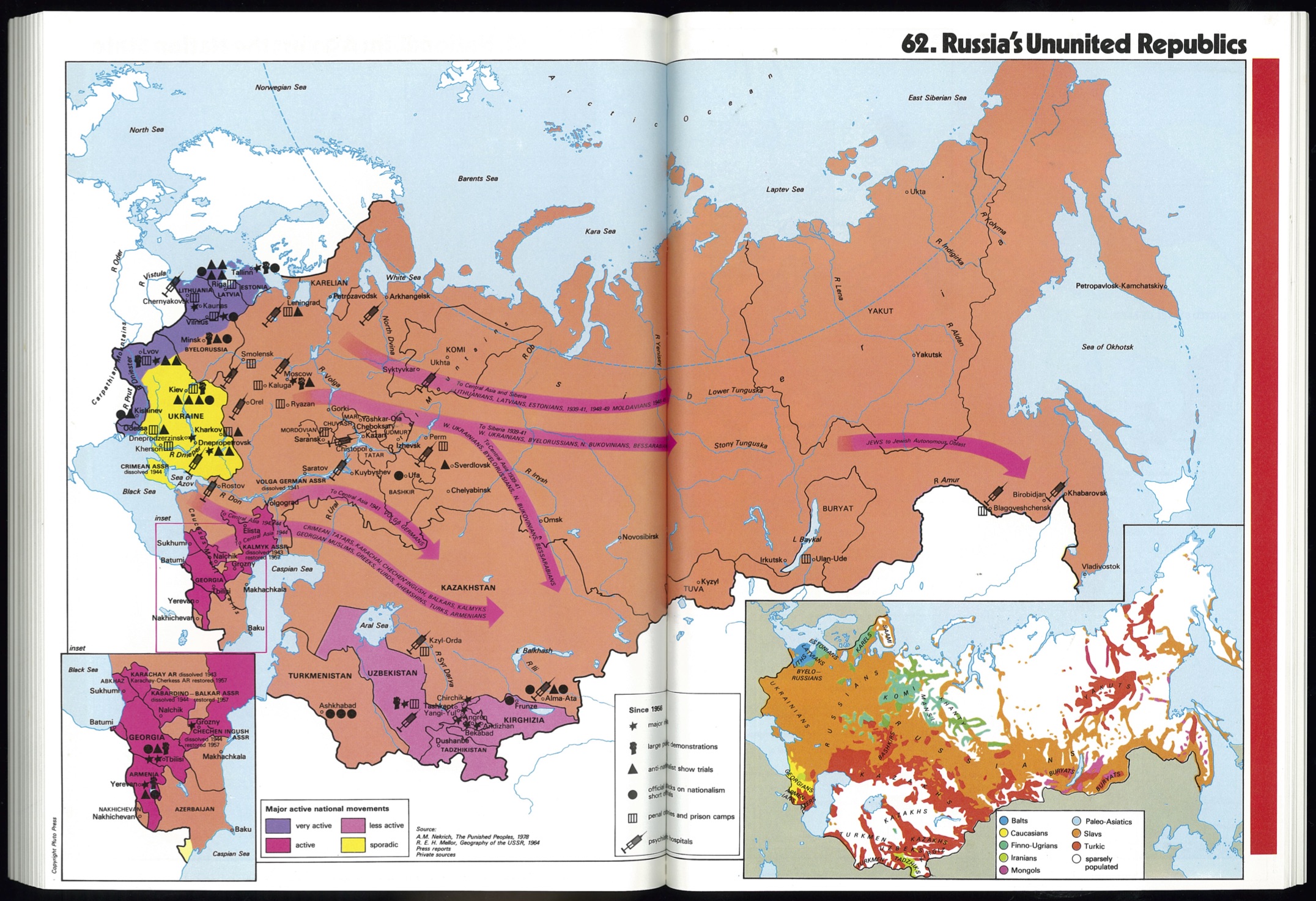

|
In a state as centralized, diverse and extensive as the USSR, nationalist challenges are inevitable though repressed. Challenge to state control, and to the dominance of the Russian republic within the USSR, date back to the resistance of the Georgian people to incorporation during 1921–22. This event was directly responsible for the conflict between Lenin and Stalin at the end of Lenin’s active political life. Stalin won the day and ever since, the Russian government – we use the word ‘Russian’ advisedly – has reacted with consistent ferocity to crush any movement for or towards national self-determination.
Despite propaganda and education, as well as more brutal methods of repression, nationalist movements have continually emerged, not least among the peoples of the ‘annihilated’ republics: the five Autonomous Soviet Socialist Republics or USSRs (Crimean, Chechen-Ingush, Kabardino-Balkar, Kalmyk, and Volga German) and the Karachay Autonomous Region. All of these disappeared from official maps of the Soviet Union in the early-years of the Second World War and their entire populations were deported to Soviet Central Asia. Four of them (Chechen-Ingush, Kabardino-Balkar and Kalmyk ASSRs and the Karachay-AR) were restored in 1957.
Information on resistance movements in the USSR is necessarily scant and uncertain and distinctions between levels of activity much be a matter of judgement. In gathering material for the map, we have called upon a number of experts and a large variety of sources, including oblique references in official reports.
The psychiatric ‘hospitals’ identified on this map are used for the punishment and control of political dissent. They are administered not by the Ministry of Health but by the Ministry of the Interior.
HTML last updated on 29 November 2020